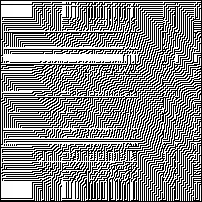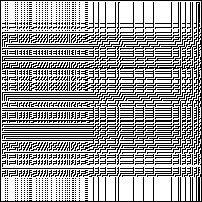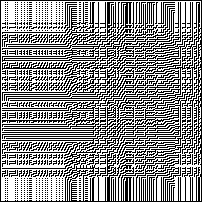Not “what is new media?” but rather “What *was* new media? What will it be?”
constant repetition, tied to an inhumanly precise and unrelenting clock,
points to a factor more important than speed—a nonsimultaneousness of
the new, which I argue sustains new media as such (148)
The Future, This Time Around
this paper argues these dreams of superhuman digital programmability create, rather than solve, archi-
val nightmares (149)
“vapor theory”
speed makes criticism / reflection difficult
Speed and variability apparently confound critical analysis. According
to Lovink, “because of the speed of events, there is a real danger that an
online phenomenon will already have disappeared before a critical dis-
course reflecting on it has had the time to mature and establish itself as
institutionally recognized knowledge.”
Paul Virilio … has argued that cyberspace has implemented a real time that is
eradicating local spaces and times [threatening] “a total
loss of the bearings of the individual” and “a loss of control over reason,”
as the interval between image and subject disappears. (151)
malleability also makes criticism / reflection difficult
“malleability also makes criticism difficult by troubling a grounding
presumption of humanities research: the reproducibility of sources. (152)”
my words: a text can disappear instantly, or move, or change, making information that cites or builds or otherwise relies upon this text difficult to trust
Digital media, through the memory at its core, was supposed to
solve, if not dissolve, archival problems such as degrading celluloid or
scratched vinyl, not create archival problems of its own. (154)
ephemerality is not new to new media (153)
so what defines “new media?”
The major characteristic of digital media is memory. (154)
Memory allegedly makes digital media an ever-increasing archive in which no
piece of data is lost. (154)
By saving the past, it was supposed to make knowing the future easier. (154)
As a product of programming, it was to program the future. (155)
As we may think
Bush, in “As We May Think,” writing at the end of World War II, argues the crucial problem facing scientists and scientific progress is access (156)
the memex sought to provide people with
“the privilege of forgetting”
by storing and indexing memories for them to be accessed later
memex revisited saw the failure of this:
“We are being buried in our own product. Tons of printed material are
dumped out every week. In this are thoughts, certainly not often as
great as Mendel’s, but important to our progress. Many of them be-
come lost; many others are repeated over and over and over”(158)
Thus the scientific archive, rather than pointing us to the future, is trap-
ping us in the past, making us repeat the present over and over again. Our
product is burying us and the dream of linear additive progress is limiting
what we may think(158)
“The difficulty supposedly lies in selecting the data, not
in reading it”(159)
The pleasure of forgetfulness is to some extent the
pleasure of death and destruction. It is thus no accident that this supple-
menting of human memory has also been imagined as the death of the
human species in so many fictions and films and de ́ja vu as the mark of the
artificial in The Matrix. (160)
Moving memory
an instruction or program is functionally equivalent to its result… this conflation grounds programming, in which process in time is reduced to process in space (161)
By making genes a form of memory, von Neumann also erases the difference between individual and transgenerational memory, making plausible Lamarckian transmission; if chromosomes are a form of secondary memory, they can presumably be written by the primary. This genetic linkage to memory makes clear the stakes of conflating memory with storage— a link from the past to the future. (164)
A memory must be held in order to keep it from moving or fading. Memory does not equal storage. (165)
digital media is truly a time-based medium, which, given a screen’s refresh cycle and the dynamic flow of information in cyberspace, turns images, sounds, and text into discrete moments in time. These images are frozen for human eyes only. (166)
without cultural artifacts, civilization has no memory and no mechanism to learn from its successes and failures. And paradoxically, with the explosion of the Internet, we live in what Danny Hillis has referred to as our “digital dark age.” (168)
the internet, which is in so many ways about memory, has, as Ernst argues, no memory— at least not without the intervention of something like the IWM (wayback machine). (169)
This belief in the internet as cultural memory, paradoxically, threatens to spread this lack of memory everywhere and plunge us negatively into a way way back machine: the so-called digital dark age (169)
Virilio’s constant insistence on speed as distorting space-time and on real time as rendering us susceptible to the dictatorship of speed has generated much good work in the field, but it can blind us to the ways in which images do not simply assault us at the speed of light. Just because images flash up all of a sudden does not mean that response or responsibility is impossible or that scholarly analysis is no longer relevant. As the new obsession with repetition reveals, an image does not flash up only once. The pressing questions are, Why and how is it that the ephemeral endures? And what does the constant repetition and regeneration of information effect? What loops and what instabilities does it introduce into the logic of programmability? (171)
Reliability is linked to deletion; a database is considered to be unreliable (to contain “dirty data”) if it does not adequately get rid of older inaccurate information. (171)
Rather than getting caught up in speed, then, we must analyze, as we try to grasp a present that is always degenerating, the ways in which ephemerality is made to endure. What is surprising is not that digital media fades but rather that it stays at all and that we stay transfixed by our screens as its ephemerality endures. (171)



